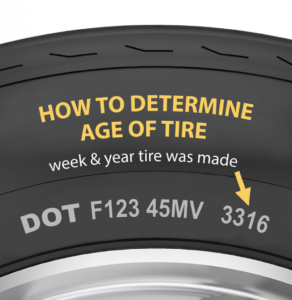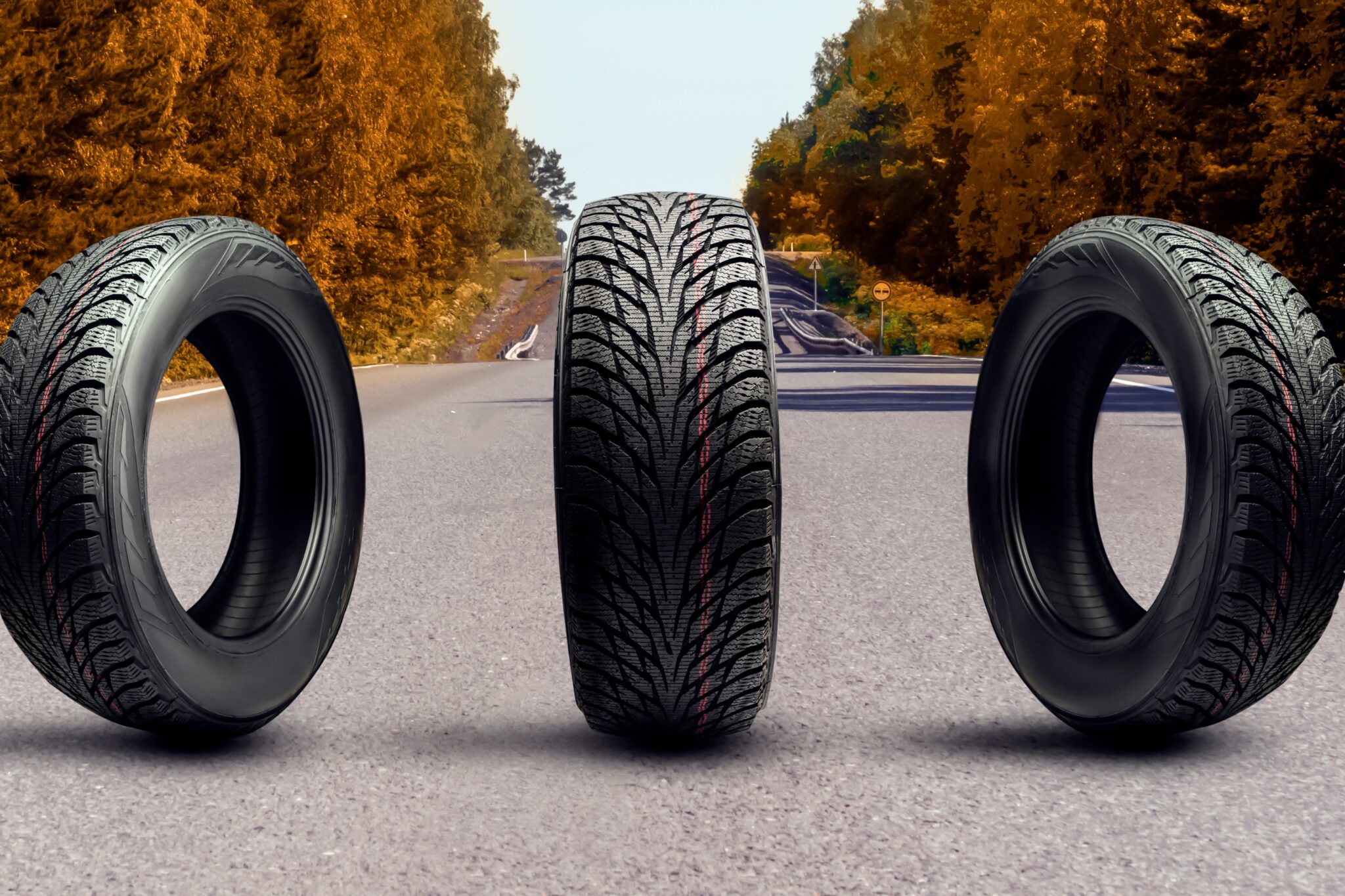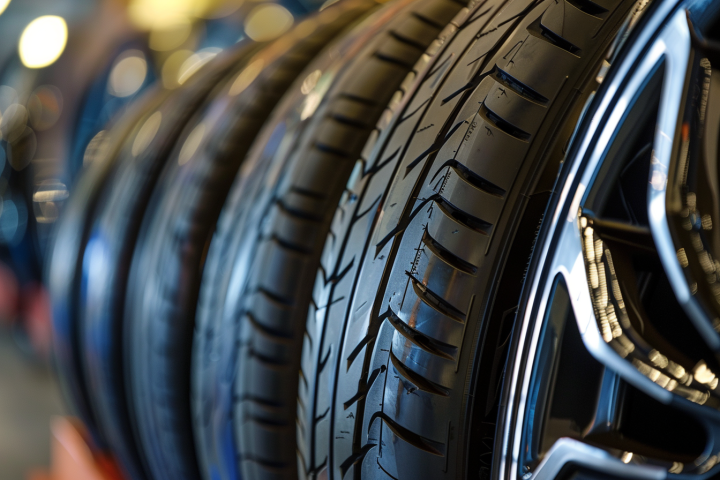Last Updated on February 24, 2024
Your Roadmap to Safe and Efficient Tire Replacement
Do you know when to replace your tires? The excellent news is that gauging your tires’ health isn’t as complicated as you might think. In most cases, figuring out when it’s time for a tire replacement only requires a quick look with a keen eye and maybe the help of a copper penny. You need to know what portions of the tires to look at and the critical tire replacement indicators. In this guide, we will give you all the knowledge you need to assess your tires accurately, determine if they need to be replaced and when, and give you some tips for picking new ones!
Here are the three key concerns related to tire replacement:
-
When should you replace your tires?
-
Why should you replace your tires?
-
What factors should you consider while choosing new tires for replacement?
In this tire replacement guide, we’ll answer these questions and beyond so you can feel confident you’re replacing your tires with the best choices for your driving needs, local climate, and vehicle safety.
When Should You Replace Your Tires?
The most common question people ask is, “How often should you replace your tires? “
Generally, two factors impact when to replace tires: wear and age.
Tire Wear: All tires eventually begin to experience wear. How the tire wears can indicate an alignment or pressure issue. The tire tread should wear evenly across the whole tire rather than on the inside or outside of the tire. The wear on your tires will happen regardless of how good of a driver you are, although it can be accelerated if you don’t take proper care of the tires.
Tire Age: Tire aging occurs when tire components, including the rubber, begin to change over time. This can happen due to environmental impacts, storage conditions, the amount of usage the tire sees when being driven, or the tire sitting with no use.

Of course, unless you’re a tire expert, it can be challenging to know precisely when tire wear and age indicate that a tire is no longer safe to drive and needs to be replaced. If you’re wondering, “How do I know when my tires expire? “A better question is “How old are my tires, and when should I change them?” To answer that question, it’s time to learn how to read your tires!
Every tire indicates the state when it was made, down to the week and year. This can help you answer how often you should change your tires – even if you’re not an expert.
When to Retire Your Tires
Industry standards say you should replace passenger and truck/SUV tires on average at six years and before ten years of age. The timing depends significantly on how the tires have been used and the weather extremes they have been subjected to. How a vehicle has been stored can also impact when a tire needs to be replaced.
If your tire passes the penny test, and a visual inspection does not show any cracks or damage, but the tire is 6-10 years old, the wisest course of action is to have it inspected by a tire shop to determine if you need to consider replacing it.
Why You Should Replace Your Tires
Knowing how often to replace tires isn’t just about taking good care of your vehicle and preventing expensive mistakes. Tires are an essential part of your vehicle’s safety.
Worn or old tires can lead to a variety of problems, including:
- Compromised road grip due to a worn-down tread
- Blowouts that leave you stranded or even cause you to crash
- Difficulty stopping and braking effectively
Additionally, uneven wheel alignments and balance problems will not only cause irregular and premature tire wear; they can cause expensive problems for your vehicle, leaving you with a hefty car repair bill in the future.
Each year, roughly 11,000 tire-related wrecks occur on the road. Don’t blow off tire maintenance as something only “car people” do. Every driver on the road should care about the health and safety of their passengers and vehicles.
What Factors Can Cause Damage to the Tires?
Many people ask, “How long do tires last on average? ”
The problem is that there’s no set answer to that question due to the variety of factors that can lead to a necessary tire replacement. These factors include:
- Tire design from the manufacturer ( some tires are built to last 70,000 miles, and others stay 40,000 miles so that they will have very different times in use )
- A lack of attention to essential tire maintenance (checking the air pressure, tire rotations, alignment, visible wear, etc.
- Not using the right tires for different seasons and terrains.
- Potholes, obstacles, curbs, sharp objects, and speed bumps
- Climate conditions (extreme hot or extreme cold can accelerate wear and tear)
- Excessive braking or acceleration
- Driving for long periods at high speeds
Every driver faces different conditions and cares for their cars differently. The bottom line is that you must be aware of your driving habits, environment, and tires to ensure you’re replacing your tires when necessary.

Signs That Your Tires Need to Be Replaced
The following tips will show you how to tell if tires are worn and must be replaced soon. Although it is always best to seek professional help with tires, these signs will indicate that you should begin researching new tires for your car.
- Tread Wear. A tire’s tread depth is measured in 32nds of an inch. New tires have tread material from 9/32″ to 11/32″. A tire is considered unsafe when the tread is worn down to 2/32″.
Using the penny test method or a tread depth gauge, you can identify the tread depth to replace tires.
Many ask us, “Is the penny test for tires accurate? “
For the most part, the penny test is very reliable. We encourage people to use it as a starting point. - Bubbles and Bulges. A bulge on your tire usually indicates that the rigid internal frame of the tire has been damaged, allowing air pressure to reach the flexible outer layers of the tire. Any tires with sidewall bulges or bubbles should be replaced immediately, even if the tread status is acceptable.
- Vibration. If your tires have been worn down unevenly, you may feel a vibration in the steering wheel when driving. Vibration can also be caused by poor alignment, so it is essential to have a tire professional determine the cause of the beat.
- Sidewall Cuts or Cracks. Tire age is a common cause of tire sidewall cracking. All tires are subjected to different harsh conditions, so the rubber in the tires naturally degrades over time. Imagine an old rubber band that’s brittle and easily broken. The same effect happens to tires, even if the tires aren’t in use and stored in a place where cracking can occur. Typically, cracking is caused by sunlight, excessive heat, road surfactants, and ozone exposure. Conversely, cuts are usually caused by force – like hitting a rock or something sharp.
- They embedded nails or stones. The issue must be addressed immediately if something is lodged in the tire. Even if the hole isn’t causing excessive leaking, ignoring a spot from something like a nail can lead to later problems for the driver. Moisture can leak into the tire, causing the steel parts to rust. Lodged items can weaken the area of the tire and possibly lead to dangerous blowouts if not dealt with promptly.
- Visible damage. Abnormal wear patterns could indicate wheel misalignment, improper inflation pressure, a need for a tire rotation, or perhaps all of the above.
- It damaged the valve caps. If the lid can’t be tightened enough, it will continuously loosen. If it’s too tight, the thread on the stem may become stripped. A damaged valve cap can leak air, allowing dirt, moisture, and debris to enter the tire.
How to Select New Tires for Replacement
After figuring out when to change tires, you’ll find that selecting replacement tires is a bit of a process. You’ll need to start by assessing your driving habits, the types of terrain, and the seasons you will be driving in to determine what you need in a tire. It would be best to evaluate our current tires’ performance, longevity, handling, ride, noise, and any other category you have noticed.
After that, you can match your driving style to the perfect tire type. To help jumpstart your research, here are a handful of the most popular tire categories, seasonal applications, and the features that make them great fits for particular drivers’ needs.
Categories:
- Highway/Touring Tires: Highway and touring tires are built for trucks and passenger cars to travel primarily on paved roads. These tires are designed to provide great mileage, a smooth ride, and last a long time.
- Sport Tires: These tires are built to provide trucks with a balance of style and performance. Designed for excellent handling and quiet rides, sports tires are generally wider and have low profiles for on-pavement driving.
- All-Terrain Tires: These are the most versatile tires on the market. They provide excellent traction on any road, from central city streets and highways to back roads. These tires can only be used by trucks and SUVs.
- Mud Terrain Tires: These are specifically built for maximum traction in off-road conditions. They can be driven daily but often have a rougher, noisier ride, typically reducing gas mileage.
- Run Flat Tires: They are built to allow for driving a short distance after a tire pressure loss event. They are typically found on luxury cars, CUVs, and SUVs.
- Snow/Winter Tires: Tires explicitly designed for winter-only use. They stay flexible in freezing temperatures and have specially designed tread designs and compounds for maximum traction and safety on winter roads.
Seasons:
- All-Season Tires: These offer versatile performance in various conditions, including wet roads or snow. They can be driven in both the summertime and the wintertime.
- All-Weather Tires: This new category of tires that manufacturers are building is distinguished by more advanced winter performance than most All-season tires. They can be used all year round and offer excellent traction and performance in all weather.
- Snow/Winter Tires: Tires explicitly designed for winter-only use. They stay flexible in freezing temperatures and have specially designed tread designs and compounds for maximum traction and safety on winter roads. Some states or counties require you to change to winter tires during certain portions of the year.
- Summer Tires: These tires have zero cold weather traction but good wet and dry traction, top handling, and performance capabilities. People in heavy winter locations commonly switch to summer tires for the warm season when taking off their winter tires.
Before you decide which tire you need, think about what kind of driving you do. You may need a highway or touring tire if you go primarily on the highway and city streets. On the other hand, if you typically drive on back roads AND need on-pavement capability, an all-terrain might be your best bet.
If you face severe winter weather during specific points of the year, you will likely need to upgrade to a tire that can handle those conditions.
First, pick the tire category to fit your driving needs, then decide on the season that best suits your climate.
How Tires Are Rated: The Uniform Tire Quality Grading Standards (UTQG)
The NHTSA has rated more than 2,400 tire lines. You can use the official NHTSA website to check out the details on specific tires.
Treadwear
The treadwear grade rates how well a tire compares to others in a specific test. A tire with a grade of 3000 wears three times as long as a tire with only a rate of 100. However, it would be best to remember different driving styles, road conditions, and maintenance levels to impact treadwear.
Traction
This refers to the tire’s ability to stop on different surfaces, including asphalt and concrete. AA is the best rating a tire can receive, followed by A, B, and C.
Temperature
The temperature rating indicates the tire’s resistance to heat. A is the highest rating, followed by B and then C.
New vs. Second-Hand Tires
Some people turn to old (used) tires as replacements to save money on the replacement cost upfront. However, this strategy can be risky, even if it initially saves money.
Here are some issues you can face when buying second-hand tires as replacements.
- There’s no guarantee that the tires have been deemed safe for resale.
- Not all damage to old tires is visible, so you can’t inspect them by eye.
- The tire’s stopping abilities might be compromised, leading to dangerous skidding.
- Blowouts might be more likely with a used tire.
Replacing Spare Tires
Last but not least, people generally don’t pay attention to their spares as they decide when to get tires replaced. Because the addition isn’t used much, people assume it doesn’t experience wear or tear and doesn’t need to be replaced.
However, even spare tires must be replaced after a specific time. Be sure to check the production date on the spare before deciding not to replace it. If you’re unsure how to check your tire’s date, refer to our post on DOT Date Code.
Don’t forget to pay attention to visible kinds of age as well. Just because a tire hasn’t been used doesn’t necessarily mean it stays protected from cracks or cuts, as well as other problems that come with age, including:
- Degraded rubber – cracks and cuts in the sidewalls
- Loss of flexibility and road grip
- Compromised structural integrity
Whether a tire has been driven or not, its lifespan can be affected by its storage condition and treatment. Suppose you know you will be parking your vehicle for some time. In that case, protecting the tires from sun and freezing temperatures is a good idea, as moving the car periodically to prevent flat spots and even jacking the car up safely to avoid damage. If you are storing winter or summer tires, keeping them in an excellent, dry location away from the sun and other weather elements is best.
Conclusion
Deciding when to replace your tires is an important decision, both for the safety of your vehicle and that of others. Use the above guide to steer you in the right direction and help determine when to switch to brand-new tires.
Additionally, deciding what to replace is essential. Based on your decisions with new tires, you can increase (and decrease) the comfort, fuel efficiency, noise, tread wear, or other aspects.
FAQs
To sum things up, here’s a list of the most frequently asked questions and brief answers to steer you in the right direction when replacing your tires.
How often should you change your tires?
Although this answer depends on several factors, including the type of car, your driving style, etc., there is an average estimate for how often you should change your tire. Generally, most vehicles travel about 15,000 miles annually, equating to around 45,000 miles every three years. The tire mileage warranty and the amount you drive over a year (over 15k miles) will indicate how often you need to replace your tires.
Which tires wear out first?
This is a topic of much debate. However, most vehicles, regardless of whether they are front-wheel drive or all-wheel drive, will wear the tires on the front more rapidly than the rear. The front tires are responsible for the steering, acceleration, and braking, while the rear wheels typically follow. Most vehicles also have most of their weight on the front of the car, causing the front tires to handle more load than the back tires. Since the wear and tear on the front and back wheels can be different, the answer to which tires wear faster is typically the front tires.
All-wheel drive vehicles must have all four tires replaced at once. You don’t have the option to replace just two at a time.
Why do tires need to be rotated?
Because tires wear unevenly front to back, regular rotations will allow you to get longer use out of your tires by wearing the tread more evenly. Front tires will wear the outside edges down more quickly, so rotation always gives you the best impression of the outside of the tire. Not rotating will result in one set of tires wearing and likely needing to be replaced sooner than the other set.
How often should tires be rotated?
First, check your vehicle’s owner’s manual to see if it has a recommended rotation scheme. Tires should be rotated roughly every six months or every 6,000 to 8,000 miles. A good rule of thumb is to turn the tires every other time you get an oil change.
Is the penny test for tires accurate?
Placing a penny head into the grooves of your tire can help you determine if the tire needs to be replaced soon. If you can see the top of Lincoln’s head, your tires are likely shallow and worn. Use this to indicate when you should have a tire professional examine the situation.
Is it OK to have different brand tires? Do they need to be replaced in pairs?
If you replace only one pair of tires on your vehicle, these new tires will have a deeper tread depth. Install the new tires onto the rear axle for better control when driving on wet and winter roads.
Ideally, you need to replace two tires with matching new ones. However, the most important thing is to install tires with similar performance features. For example, you should never put two high-performance tires with two touring tires.
Generally, replacing tires in pairs (both in the front and back) is bright. Although replacing all four at once is the easiest, you can do one pair at a time to save money. If you’re wondering, “Can I replace just one tire? “the answer is typically no. The difference in tread depth and stance can reduce your vehicle’s performance.
Do all four tires have to be of the same brand?
Most tire sellers would likely recommend avoiding mixing tires from different categories. They can be other brands, as long as the internal construction and size are the same – but pay close attention to the stance of the tires and be sure they are very closely matched.
Do you have to replace the tires with the same brand the vehicle initially had?
Nope! Ensure all the tires are evenly matched and appropriate for your vehicle and driving habits.
How long do tires last?
It isn’t easy to give a firm answer to this question. Generally, most tires typically last for three to five years. That’s when roughly 12,000 to 15,000 miles are put on the car annually.
What can you do to make your tires last longer?
The best things to do to make your tires last as long as possible are:
- Check the tire pressure monthly and adjust it according to the pressure recommended by your vehicle
- Have the tires rotated every 6,000 to 8,000 miles.
- Check your vehicle’s alignment twice a year.
What do you do after getting new tires?
Once you install your new tires, take it easy on the road for a while to break them in. New tires may feel different than those you replaced since they are likely performing better than worn tires and have the latest technology.
Also, if you change categories of tires, you might experience a significant change in the feel of your drive. For example, switching from a highway to an all-terrain tire might change your industry’s roughness, noise, visibility, and fuel consumption.









